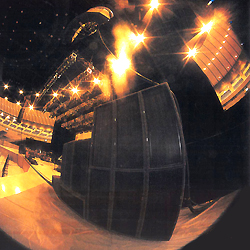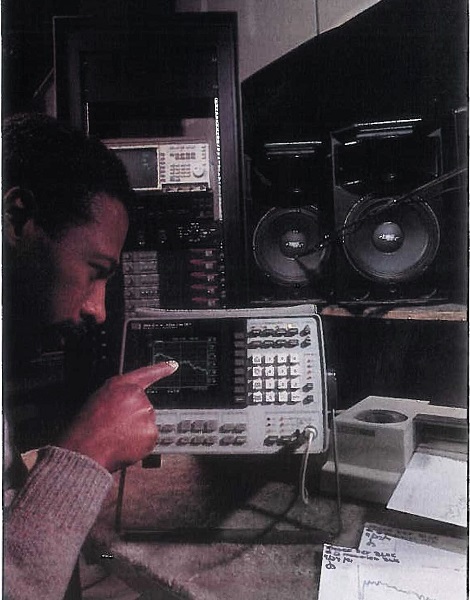
The Fully Horn-Loaded System
First, fully horn-loaded doesn’t necessarily mean better. It usually denotes a greater level of development, if only because the realization is much more difficult to achieve. On the development side, most serious designers work in this domain at one time or another.
The typical system employs a fiberglass or thin wooden low-frequency horn flare, and mid- and high-frequency horns almost always made of fiberglass. The enclosure shape is often trapezoidal. Notable exceptions are certain multi-driver-on-one-horn arrangements contained in square or rectangular enclosures, and folded bass horns used with straight mid and high horns.
The commitment to this class of design in financial and engineering resources is usually substantially greater than the previous two categories. Again, this does not automatically make them better. Rather, it simply indicates a more complicated process has been undertaken to arrive at the end result.
PROS: The fully horn-loaded system has at least one inherent theoretical advantage: the directional control of a well-designed, low-frequency horn (assuming there is, in fact, directional control in the candidate design) can provide greater direct-to-reflected sound and a better ability to focus the system. In a highly reverberant environment, this attribute can be a critical factor, significantly differentiating the performance capabilities from that of a direct radiator/bass reflex system.

CONS: A fully horn-loaded system is much more difficult to design and construct than a direct radiator/bass reflex system. The ability of a given design to array well will depend greatly on the horn flares, horn directional characteristics, and other subtle details. Altering and rebuilding prototypes to measure final performance characteristics of large groups of speakers is a costly and time-consuming process. A low-frequency horn that can reproduce sub-bass frequencies must be extremely large, typically of non-practical dimensions. For this reason, horn-loaded systems often must be supported with direct-radiator, bass-reflex subwoofers.
As we enter the domain of the fully horn-loaded, integrated loudspeaker design, the larger resources of a dedicated manufacturing environment are probably required to successfully design, prototype, test and implement the cost-effective production of multiple units.
The Fully Engineered System
A final step that some designers may take is the fully engineered system that combines electronic controllers or processors addressing the electroacoustic properties of the loudspeakers. By doing so, much greater control of component performance parameters can be addressed at the design stage.
Improvements realized from this approach are surrounded by controversy, involving a more detailed discussion.A fully engineered system would most likely include companion rigging hardware, designed at the same time as the enclosures, for maximum flexibility, safety and modularity.
